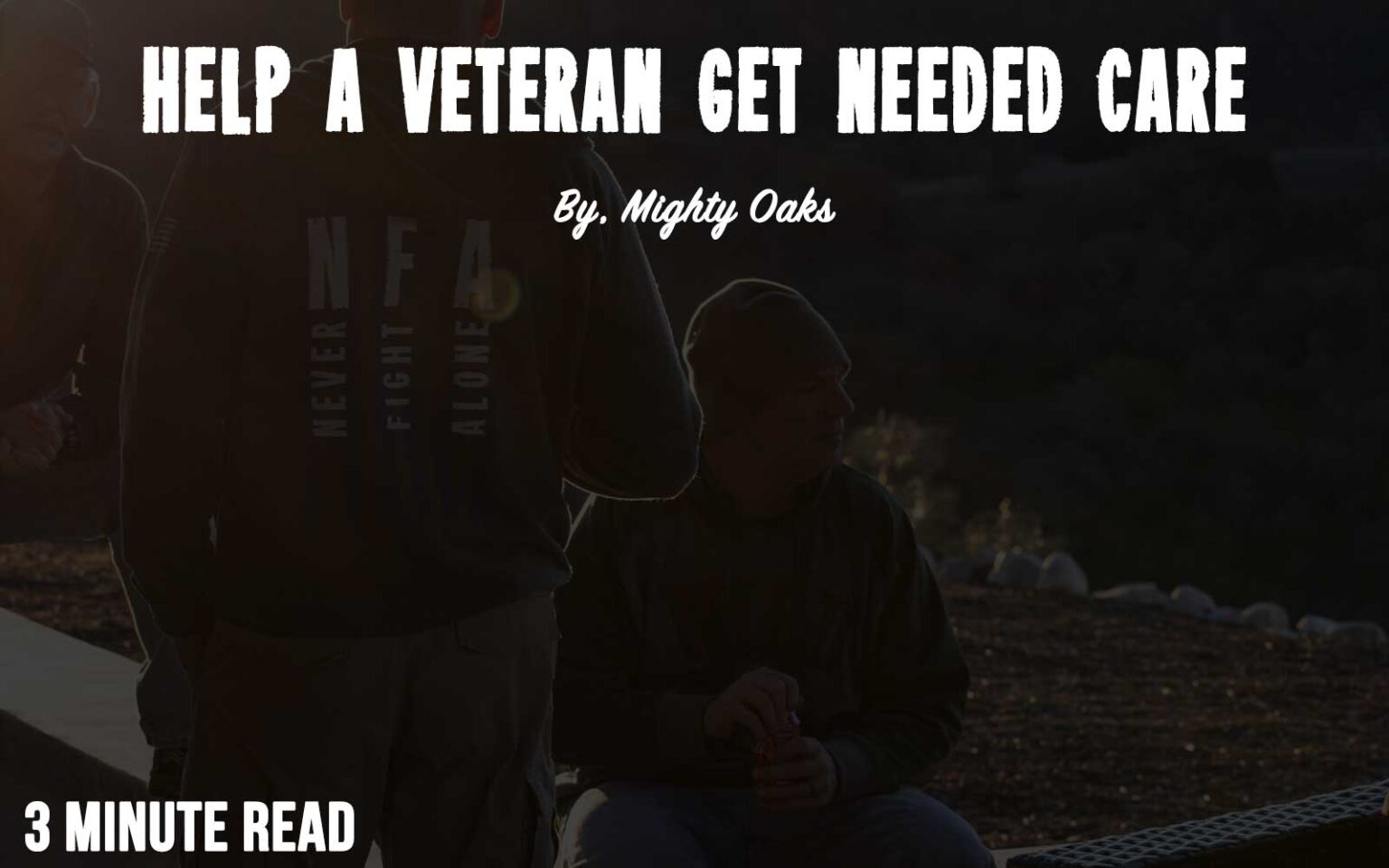[et_pb_section][et_pb_row][et_pb_column type=”4_4″][et_pb_text]
Table of Contents
“All it could take is for a loved one to mention Mighty Oaks Warrior Programs for a change to transpire.”
After 20 years in the war on terror in Iraq and Afghanistan, more than half of the 2 million Veterans struggle with physical and mental health problems stemming from their service.
According to the Department of Veteran Affairs, every day in America, over twenty veterans commit suicide. The V.A. Hotline receives an average of 400 calls per day. 2018 marked the highest military active duty suicide rate in 10 years.
At the same time, the divorce rate among active military personnel and returning Veterans is staggering, impacting Veterans as well as their families. Many combat vets cannot reintegrate into civilian life, leaving their families to work through the aftermath.

Why Can’t I Help the Veteran in My Life?
It is not an easy task to take telling a loved one that they may need assistance. Not knowing the depth of their battle is challenging, but a challenge that we welcome at Mighty Oaks as we have also ensured that challenge.
It is hard to help your loved one in an area that is unfamiliar to you. You can help a loved one by displaying care and offering them resources that focus on Veteran care.

How to Support Them Getting Help
*This guidance is provided by the VA*
– Express your support or concern. Try saying, “I know things are not going how you like right now, but know that I’d like to help.”
– Bring up your concerns and then find another time to talk again instead of trying to resolve everything at once.
– You don’t need to ask about what happened to support a Veteran. If you do not have military experience, you can say something like, “I’m sure you went through things while serving that would be hard for me to understand, so maybe talking to someone at the VA or a Vet Center might help?”
– “Demanding” someone seek help can backfire, making them less likely to go for help.
– Avoid using threatening language or making ultimatums. Try not to say, “You need to go for help, or else.” But it is okay to let someone know how their behavior is affecting you.
– Talk about choices. You can say, “I know it’s your call whether you go to see somebody, but if there’s something I can do to help, let me know.”
– Set a time to talk about your concerns, so your loved one feels prepared.
*Provided by the VA: How To Help A Veteran*

Mighty Oaks Programs
Our approach to Veteran care is different than many other Veteran care programs in the United States.
The Mighty Oaks Warrior journey begins with intensive peer-based programs that utilize instructional sessions, camaraderie, and team-building activities that are designed to challenge our Warriors to overcome their past experiences and move forward into a life of purpose.
Our programs take place all across America. Each facility allows the Warriors to appreciate the peace of nature and have an “unplugged” experience while they focus on the challenges they face in completing the program. View our program descriptions below, or visit our Frequently Asked Questions page for more information by clicking here.
What’s Next?
Learn more about Mighty Oaks by visiting our website, to gather all the necessary information needed to help your loved one.
After that, have your loved one fill out the application with the button below to help get Our Nations Warriors the help they need to change their legacy.
*The application must be filled out by the individual who would participate*







